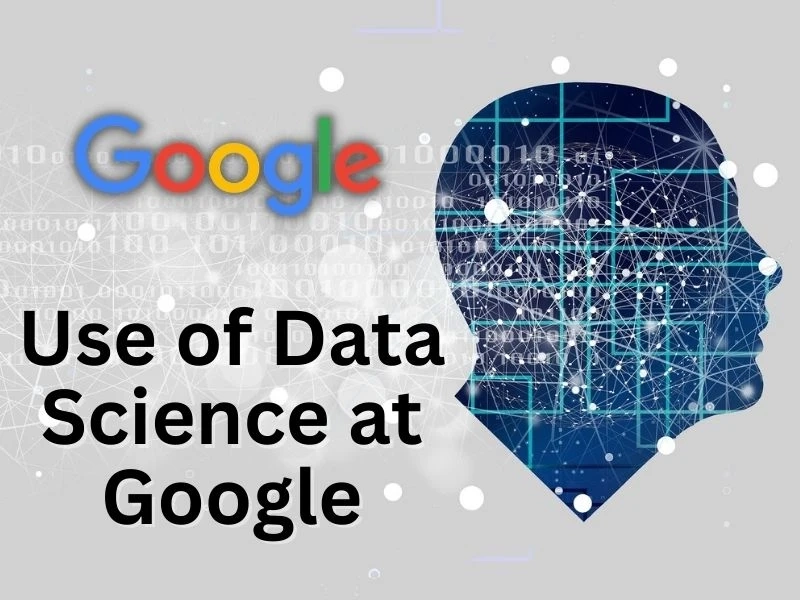One way that Google uses data science is through the utilization of machine learning algorithms. With these algorithms, Google can process and analyze vast amounts of data – from search queries to user behaviour – and optimize their services based on that information. Automated decision making is then enabled, allowing for better user experiences as well as more precise advertising opportunities for businesses.
But how does Google go about collecting all this data? That’s where the concept of data lakes and warehousing come into play. Data lakes allow the large scale gathering and storing of raw information from numerous sources, while warehousing provides structure and organization to the existing datasets. This idea enables not only smoother access but also makes possible faster analytics, optimization tools, and predictive models—all relying on an established trove of structured information that can be used as a foundation for further exploration. DataTrained – The leading institute in India that offers best PG Course in Data Science, AI and ML.
This brings us to cloud services and solutions: a staple in Google’s usage of big data technology today. By employing cloud services such as BigQuery, Pub/Sub, Dataflow, Cloud Storage, and ML Engine (among others), Google provides customers with reliable data storage services that are able to scale quickly when needed—allowing businesses to stay agile in their respective industries without compromising on quality or delivery deadlines for products or services alike. The result? Faster projects completion times with fewer technical hiccups along the way.
How Does Google Implement Data Analytics?
Google is renowned for its use of data analytics and has become a leading force in the field. As more and more companies recognize the potential of data science, it is important to understand how Google implements these techniques.
Google collects large amounts of data from users through their products, such as their search engine and Chrome browser. This data is then used to create insights about user behaviour, interests, and preferences.
The collected data is used to build machine learning models which allow Google to make predictions from the data. These predictions are then used to optimize many of their processes, such as personalizing ads or improving search accuracy.
In addition to machine learning, Google also uses optimization algorithms to improve efficiency in their operations. These algorithms enable them to automate many of their processes and make decisions based on the available data.
Once these models have been created, they are then used for reporting and visualization purposes. This allows users to see what’s happening within the company in real time and easily interpret the results.
Once these models have been developed, they need to be deployed into the production environment. This is done with careful security measures in place so that customer information is kept private and secure.
Finally, before any model is deployed it needs to be tested against different scenarios using algorithm testing techniques such as A/B testing or Monte Carlo simulations. This ensures that all models are working properly prior to being released into production environments.
In conclusion, Google’s use of data analytics techniques helps them collect insights from their userbase in order to optimize processes and create predictive models which can be easily reported on and visualized for stakeholders within the company.
Types of Databases Used by Google
Modern technology means we’re constantly surrounded by data. Every time you use your mobile phone, send an email, or build a shopping list on your computer, you’re creating data. Google is one of the most well-known tech giants that uses data science to make life easier. To do so, they rely on several different types of databases.
Database technology is essential for managing structured data – i.e., data that’s organized into tables and fields according to certain rules. In this article, we’ll discuss the types of databases Google uses and how they help create a better user experience.
Google Cloud SQL is Google’s managed database service that provides access to MySQL databases in the cloud. Businesses can use this database to access and manage large volumes of their MySQL data with great speed and scalability while enjoying a simple set up process with less maintenance overhead from IT teams.
Google BigQuery is a powerful analytics tool designed for querying large datasets in real time without having to copy or move the source data around. It allows users to gain insights quickly from their large datasets by running queries against them in an interactive environment using SQL or other query languages like BigQueryML (Machine Learning). With BigQuery, you can explore, analyze and visualize your data with ease and speed – so you can quickly uncover insights from even the largest datasets. If you want to learn Data Science, Machine Learning and AI, Enrol now at DataTrained, India’s leading institutes for PG Courses.
Google Spanner is another type of database used by Google for distributed databases across multiple cloud regions for mission critical applications that require scalability but also need consistency in order to deliver low latency all over the world. It offers SQL support, so developers can write standard SQL code to write queries.


